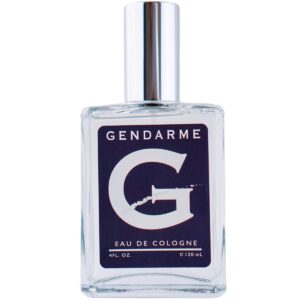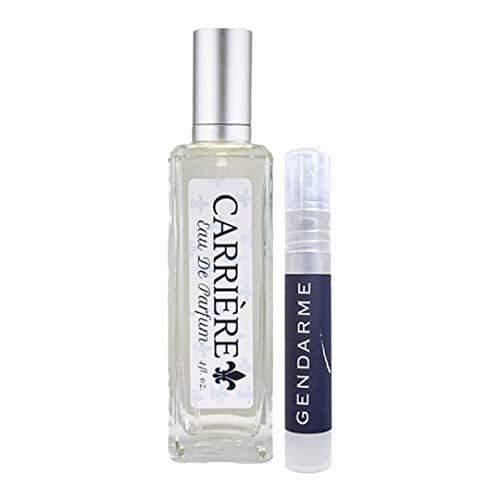The ancient techniques of creating perfume date back thousands of years, with the oldest traces appearing in Mesopotamia, Cyprus, and ancient Egypt. The Latin term “per fume,” which means “through smoke,” is the source of the English word “perfume.” According to popular belief, perfume was originally used in everyday life by the ancient Egyptians, who were then followed by the ancient Chinese, Indians, Israelis, Carthaginians, Arabs, Greeks, and Romans. Some of the oldest perfumes ever found were reportedly uncovered by archaeologists in Cyprus, and they date back over 4,000 years. The first known perfume producer is identified as a woman by the name of Tapputi-Belatekallim on a more than 3000-year-old cuneiform tablet from Mesopotamia. Yet, at the same time, perfumes could also be obtained in India. In the Hindu Ayurveda scriptures Charaka Samhita and Sushruta Samhita, attar, an essential oil made from botanical or other natural sources, is listed as one of the earliest distillations that has been shown to have taken place.

Along with creating perfume, the Egyptians are also credited with creating glass, which was originally used for perfume bottles. Chemists from the Arab and Persian empires contributed to the systematization of perfume manufacture and its widespread use in classical antiquity. The distillation process that produced liquid perfume is credited to the Arabian polymath Ibn Sina, better known as Avicenna in the West. Islamic civilizations considerably improved the extraction of perfumes by steam distillation and introduced new raw materials, two important areas where Middle Eastern perfumery developed. Both have had a significant impact on scientific and perfumery advances in the West. Islamic countries improved perfume manufacture and continued to utilize it in daily life and religious rituals, using elements like oud, roses, and amber, among others. Islamic societies like the Arabs and Persians had more access to a variety of spices, resins, herbs, precious woods, and animal aroma components like ambergris and musk because they were such active traders.
Many of the flowers and herbs used in perfumery were grown by Muslim communities in addition to being traded; for instance, rose and jasmine were indigenous to the area, and many other plants, including bitter orange and other citrus trees imported from China and southeast Asia, could be grown in the Middle East and are still essential components in perfumery today. The Muslim world played a significant role in igniting the global perfume commerce. When glove makers in Grasse, France, were looking for a way to deal with the disagreeable smell of the urine-tanned leather they worked with in the 13th century, fragrance and fashion were palpably intertwined. Local perfumers helped the tanners out, and perfumed gloves gained popularity in European culture. The use of perfume increased dramatically throughout the 16th century in France, especially among the affluent and noble. Everything was perfumed under the influence of Louis XV’s court; people added perfume to their bathwater, poultices, books, clothes, and even consumed it with wine or dropped it on sugar crystals. With the development of eau de cologne in the 18th century—a term used to describe a family of fresh perfumes that are distilled using extracts from citrus, floral, and woody ingredients—the perfume business continued to thrive and gradually opened up to a wider clientele. Similar to fashion, fragrance has long been a way to express uniqueness and social position while also capturing and establishing positive sensations. Over the years, not much has changed in the way the materials for perfume are processed. A wide variety of botanicals are hand-picked and harvested, and distillation, in which steam extracts the essential oils from the plants, is still one of the most popular processes, is used to extract these oils. Maybe the biggest change in the perfume industry today is the labs’ reliance on computer technology, which not only helps to ensure and maintain quality and consistency but also gives perfumers new channels for communication and more precise means of creating innovative formulae.
Fragrance Notes: Everything You Need To Know
Our wardrobes can benefit from using perfume. Fragrances assist us project a particular aura and presence, whether we choose to wear them on a date or throughout the workday at the office. The utilization of fragrance notes contributes to each person’s presence to some extent. Fragrance notes are the various elements that, when combined, create a coherent, appealing perfume, much like musical notes make up a song. You will learn everything you need to know about fragrance notes and what they are in order to better comprehend your favorite perfumes. Also, it will steer you toward a perfume depending on your preferred aroma notes.
Ingredients that make up a fragrance called perfume notes. They are divided into three groups: foundation notes (cinnamon, jasmine), heart notes (citrus, lavendar), and top notes (vanilla, musk). The perfume accord, or the fundamental quality of a smell, is created by this carefully chosen combination of elements. The notes of a scent are meticulously chosen by perfumers to ensure that it smells good and conjures up a certain memory. A scent pyramid organizes notes according to type.
Top notes, heart notes, and base notes are the three primary divisions of a perfume’s notes. The notes at the top of the pyramid are more volatile (they vanish more quickly), while the notes at the bottom are more durable.
Top notes, also known as headnotes, make up a fragrance’s top layer. In other words, top notes are the aromas that are most prominent when you first spray a perfume. They help to establish first impressions and mold the narrative of a fragrance. Top notes typically only last for the first five to fifteen minutes before dissipating. Their primary function is to emit an initial scent before blending seamlessly into the following component of the fragrance.
As a result, top notes often consist of lighter and smaller molecules. Citrus scents like lemon, orange, and bergamot as well as delicate flower aromas like rose and lavender are some examples of frequent top notes. Anise and basil are also frequently employed as top notes. The “heart” of the scent, as the name implies, is composed of heart notes. They serve the dual purpose of preserving part of the top notes’ aroma while also adding additional scents to enhance the overall experience. The heart notes, which are also sometimes referred to as the middle notes, act as a mellower for the base notes, which might not smell as good on their own. Base notes in perfume lay the groundwork for the fragrance along with middle notes. They add extra depth and resonance while enhancing the lighter sounds. Base notes are particularly deep, weighty, and enduring fragrance notes since they serve as the foundation of the perfume. After around 30 minutes, they begin to take effect and combine with the middle notes to produce the fragrance’s aroma. Base notes have the longest sillage and can last up to six hours because they absorb into your skin. Vanilla, amber, musk, patchouli, moss, and woody notes like cedarwood and sandalwood are common base notes.
How Do You Identify Notes?
Based on the amount of time that has gone since the application of the perfume, you can distinguish specific notes. Top notes are those you detect as soon as the perfume hits your skin for the first time. The heart notes enter to create the perfume’s essence after this initial blast of flavor fades. The perfume that lingers the longest and that you recall the most is the base note. Each note gives the fragrance a distinct quality. Fresh, floral, spice, fruits, woods, and musk are some of the most popular note categories used in fragrances; each is often utilized in a certain note category. For instance, floral and fresh scents usually always appear at the top of the note pyramid, while musky and woodsy aromas typically do so at the bottom.
Fresh notes are frequently used as top notes because of their bright, lemony quality. A fragrance’s freshness and sweetness are provided by notes like orange and bergamot, but lemon and bergamot have a more bitter, biting flavor. Floral accents give a scent a more natural sense. They can be combined with other notes to create a more dramatic fragrance. They are frequently used as top or heart notes. In addition to ylang ylang, another well-liked flower component is jasmine, which has a fruity and white floral aroma. Fruity notes are most frequently utilized as middle notes since they combine well with other notes and can give a fragrance additional depth. Blackberry, for instance, offers a deep, earthy aroma, whilst apple is fruity. Spice notes are utilized to warm up and intensify a scent, and they go well with floral notes in the perfume’s center. While some notes, like rosemary and basil, have a herbal aspect, others, like cinnamon and nutmeg, provide spice and sweetness. Two wood notes that are frequently utilized in a fragrance’s base to lengthen the longevity of the scent are patchouli and sandalwood. Although the majority of wood notes have an earthy feel, cedarwood and oud have a pleasant sweet fragrance.
Gendarme Eau De Cologne Spray for Men

Gendarme Eau De Cologne (EDC) was created to be light and delicate. Its top notes, which include citrus and verbena on a crisp green base, dry down to a jasmine and thyme herbal blend. A distinctive & sensual aroma is created by the delicate, alluring undertones of old leather that sink into skin. Simple to wear and looks fantastic.
Carriere By Gendarme Eau De Parfum Spray For Women 4 oz and Gendarme for Men Cologne Travel-Size Spray Set (Spray Glass + Bottle)

This sophisticated but professional scent With the scent of jasmine and lilac, a light and refreshing formula, and expertly mixed essential oils, Carriere By Gendarme Eau De Parfum Spray For Women captures the essence of the strong and opulent modern woman. Gendarme cologne can be applied once and has a lasting effect. created to be allergy-free. Both skin irritations and asthmatic disorders won’t be impacted by it. Gendarme Eau De Parfum Spray For Women offers an alluring aroma of Carrière, while Gendarme for Men Cologne for Men is great for presenting to any man who wishes to seem dashing throughout his workday.
Conclusion
The annual production is entirely dependent on abundant harvests because it takes thousands of blossoms to produce only one pound of essential oils. Production of scent may be impacted if a disease decimates the crop for the season. Also, there are issues with gathering natural animal oils. Creatures who were once slain for the worth of their oils, like the sperm whale, are now in risk of extinction. Animal oils are also expensive and challenging to extract. People wear perfume for a variety of reasons. Some people find it increases their self-confidence and makes them feel more attractive, while others see it as a mark of originality that helps them stand out from the crowd. A pleasant memory or altered mood might be brought on by perfume. One can only hope that, for whatever reason, anyone who is aware of how perfume is created would learn to value that unique element that permeates the air and transforms everything you spray it on.




